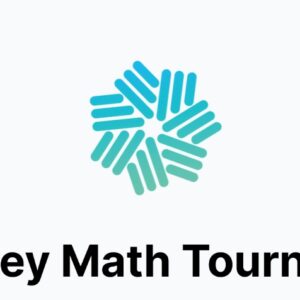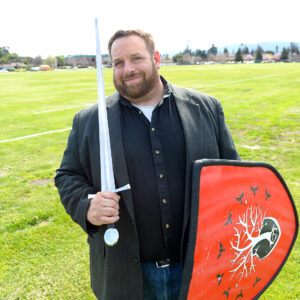This article originally appeared in the winter 2010 Harker Quarterly.
According to the dictionary, an entrepreneur organizes, manages and assumes risk. That definition clearly highlights ways that extracurricular activities at Harker offer great opportunities for entrepreneurial thinking.
In a number of Harker organizations, students develop creative paths to achieve organizational goals, many of which add to the coffers of their club or charitable organizations, while others develop the spirit of entrepreneurship through acquisition and effective use of materials and research.
Entrepreneurship is clearly alive at the lower school where the lower school student council, advised by Kristin Giammona, elementary school head, gathers feedback and suggestions from its peers, then discusses solutions and ideas to address the concerns of the community. “It’s always [the students] saying, ‘Hey, we need to do something,’” Giammona said. “It’s always their idea. They definitely want to respond and help.”
In addition to improving things on campus, the lower school student council also supports the grade 4 toy drive and grade 5 food drive, bagging, loading and organizing the donated goods before shipment. Last year, the student council organized a bake sale to raise money for Haiti’s earthquake victims.
In the middle school, the eCYBERMISSION program, led by science teacher Vandana Kadam, requires teams to use math, science and technology to present a solution to a community issue. One of last year’s teams, The Dust Busters, spent all year researching a community controversy two students initially read about in the town newspaper related to mercury dust emissions from Lehigh Hanson Cement Plant.
Before submitting their project online in February, the quartet spent five months collecting samples from four different bodies of water, testing for emissions in the lab and compiling data to research ways to educate the residents about the pollution and possible health issues. They also interviewed company officials to hear their side of the story.
The Dust Busters discovered that, while the plant was not in violation of U.S. Environmental Protection Agency regulations, the mercury level in water near the quarry was significantly higher than mercury levels in other bodies of water in the area. The students took their findings to the Cupertino City Council and created a pamphlet that was distributed door to door to residents.
The entrepreneurial aspects of eCYBERMISSION projects stand out. A good project “needs students who have good research skills, writing skills, data collection and analysis, and public relations skills to help them interview experts in the field that they are working on,” said Kadam.
Peace-2-Peace is one of many service- oriented groups on the middle school campus using entrepreneurship to advance its goals. Two years ago members organized a garage sale to raise money for an orphanage in India. Last year they sold Halloween “candy-grams” to start an account with Kiva, an organization which provides microloans to people in underdeveloped regions so they can start businesses.
The single most obvious entrepreneurial effort takes place in the hardware-filled robotics laboratory. “I model my program after a Silicon Valley start-up,” said Eric Nelson, physics teacher and robotics advisor. “Each year the team receives ‘seed funding’ through the school via the advancement office. The team learns early on that they must live within their funding limits, so all members are made aware of the need to plan and report.”
Elected officers appoint the corporate equivalent of vice presidents to oversee every aspect of the team, including team image (promotion, logos, recruiting, spirit, etc.), business development (business plan and sponsorships) and finance (purchasing, vendor relationships and budget planning).
In an example of spontaneous entrepreneurship, for this year’s Harker Family & Alumni Picnic, robotics students designed and built a laser gun game that allowed picnic goers to fire lasers instead of water to fill and pop balloons. The idea was a product of a brainstorming session, “and the details evolved as they tried to get the various parts to work,” Nelson said.
“In preparation for start of the robotics competition season which runs from January to April, the students must build up strategic partnerships with other teams, suppliers and machine shops in order to ensure we have access to the resources we are likely to need,” he added.
The efforts at all three schools embrace most, if not all, the elements of entrepreneurship, including risk: like adult entrepreneurs, students risk failure and risk spending their limited time on projects outside of required classroom work. The payoffs are there, however, in personal growth, whether failing or succeeding, and in some contests, like eCYBERMISSION, substantial cash prizes: Harker’s two regional winning teams, seven students in all, earned $18,000 in prize money last year, and one team traveled to Baltimore to present to the U.S Army organizers, an invaluable experience.
Of course, at Harker, the focus is on the lessons learned, not on results above all. In the robotics program, students learn a great deal more than just how to run a robot. They learn something about how to build and run an engineering company, said Nelson. “There are years where we ‘go public’ and are off to the championships, and then there are years where we go Chapter 11. In both cases the students learn volumes about not only engineering but also team work, leadership and organization,” he noted.








